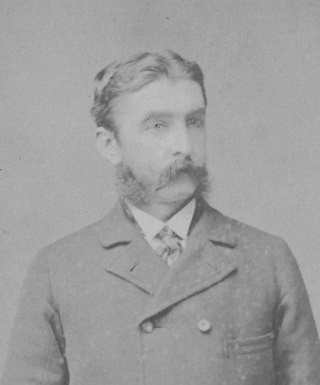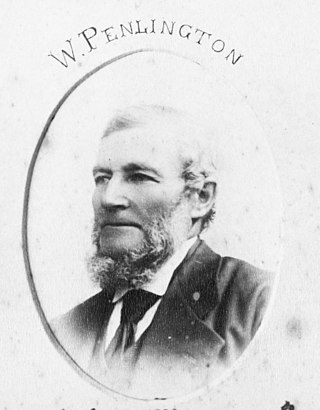Related Research Articles

William Sefton Moorhouse was a British-born New Zealand politician. He was the second Superintendent of Canterbury Province.

James Edward FitzGerald was a New Zealand politician. According to some historians, he should be considered the country's first premier, although a more conventional view is that neither he nor his successor should properly be given that title. He was a notable campaigner for New Zealand self-governance. He was the first Superintendent of the Canterbury Province.
The 2nd New Zealand Parliament was a term of the Parliament of New Zealand. It opened on 15 April 1856, following New Zealand's 1855 election. It was dissolved on 5 November 1860 in preparation for 1860–61 election. The 2nd Parliament was the first under which New Zealand had responsible government, meaning that unlike previously, the Cabinet was chosen by Parliament rather than by the Governor-General of New Zealand.

The 24th New Zealand Parliament was a term of the New Zealand Parliament. It opened on 23 February 1932, following the 1931 election. It was dissolved on 1 November 1935 in preparation for the 1935 election. The 24th Parliament was extended by one year because the 1935 election was held later than anticipated due to the ongoing depression, similarly the 1919, and the 1943 elections were held two years late, having been postponed during World War I and World War II respectively.

The 1884 New Zealand general election was held on 22 July to elect a total of 95 MPs to the 9th session of the New Zealand Parliament. The Māori vote was held on 21 July. A total number of 137,686 (60.6%) voters turned out to vote. In 11 seats there was only one candidate.
Akaroa was a New Zealand electorate. It was located in Banks Peninsula, Canterbury, and named after the town of the same name. One of the original 24 electorates, it existed from 1853 to 1893.

William John Alexander Montgomery was a New Zealand politician and merchant from Little River on Banks Peninsula. Born in London, he lived in a number of places and pursued a number of occupations before settling in Christchurch, New Zealand.

Henry George Ell, commonly known as Harry Ell, was a Christchurch City councillor and a New Zealand Member of Parliament. He is famous for his conservation work around Christchurch's Port Hills, his advocacy for the Summit Road, and his construction of the Sign of the Takahe and other road houses along the Summit Road.
Lyttelton is a former New Zealand parliamentary electorate. It existed from 1853 to 1890, and again from 1893 to 1996, when it was replaced by the Banks Peninsula electorate.
Grey and Bell was a Taranaki electorate in the New Zealand Parliament from 1853 to 1881.
Mount Herbert was a parliamentary electorate in the Canterbury region of New Zealand, from 1866 to 1870.
Augustus Edward White (1839–?) was a 19th-century Member of Parliament in New Zealand.
Pensioner Settlements was a 19th-century parliamentary multi-member electorate in the Auckland region of New Zealand, from 1853 to 1870.
Ellesmere was a parliamentary electorate in the Canterbury region of New Zealand. It existed for two periods between 1861 and 1928 and was represented by six Members of Parliament.

Walter Hippolyte Pilliet JP was a 19th-century Member of Parliament in Christchurch, New Zealand. He worked initially as a surveyor and was then resident magistrate in several places. He was a newspaper editor and was represented in Parliament for one term.
George Armstrong was a 19th-century Member of Parliament in Canterbury, New Zealand.
The 5th New Zealand Parliament was a term of the New Zealand Parliament. Elections for this term were held in 68 European electorates between 14 January and 23 February 1871. Elections in the four Māori electorates were held on 1 and 15 January 1871. A total of 78 MPs were elected. Parliament was prorogued in December 1875. During the term of this Parliament, six Ministries were in power.
The 9th New Zealand Parliament was a term of the Parliament of New Zealand.
The 1863 Akaroa by-election was a by-election held on 30 October 1863 during the 3rd New Zealand Parliament in the Canterbury electorate of Akaroa.

William Penlington was a sawmiller and builder from Akaroa, New Zealand. A member of the Akaroa Borough Council for over two decades, he was mayor of Akaroa for two terms.
References
- ↑ Wilson, James Oakley (1985) [First ed. published 1913]. New Zealand Parliamentary Record, 1840–1984 (4th ed.). Wellington: V.R. Ward, Govt. Printer. p. 191. OCLC 154283103.
- ↑ "Local Intelligence". Lyttelton Times . Vol. IX, no. 583. 5 June 1858. p. 5. Retrieved 3 May 2013– via Papers Past.